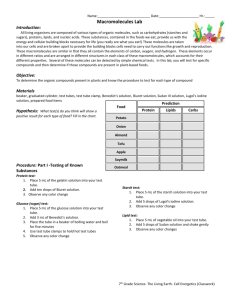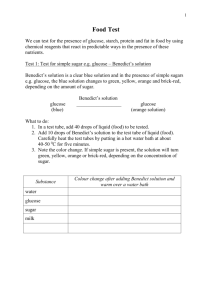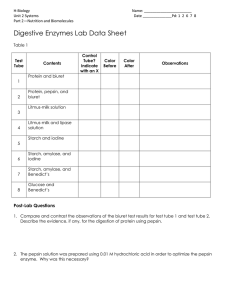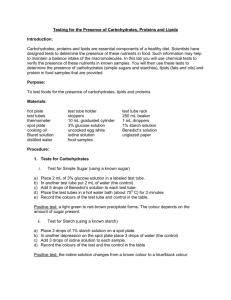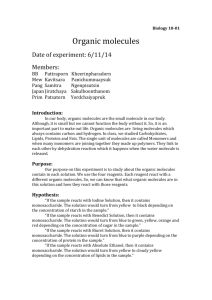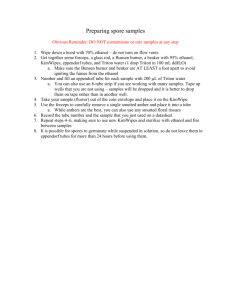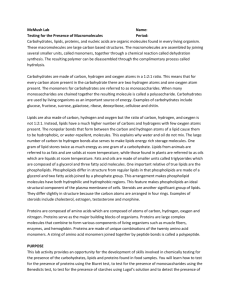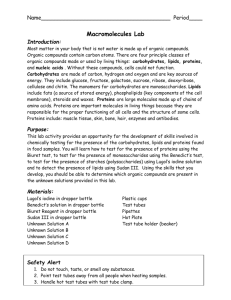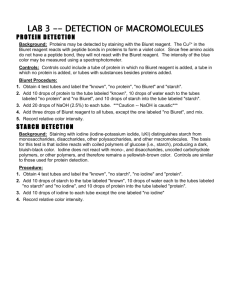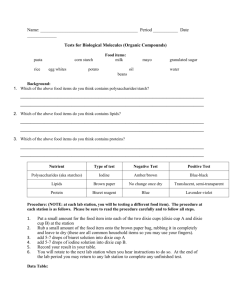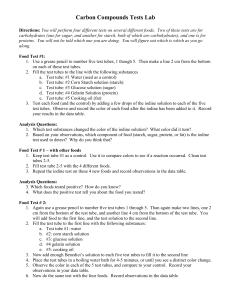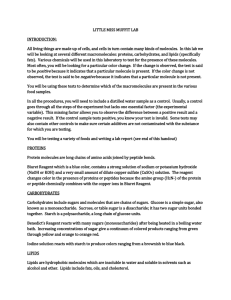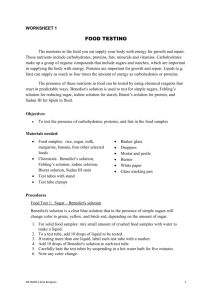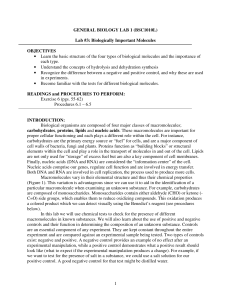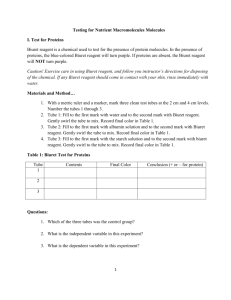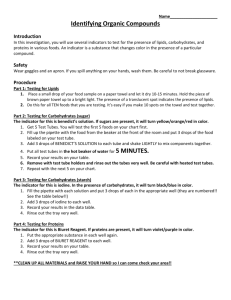Testing for Different Macronutrients
advertisement
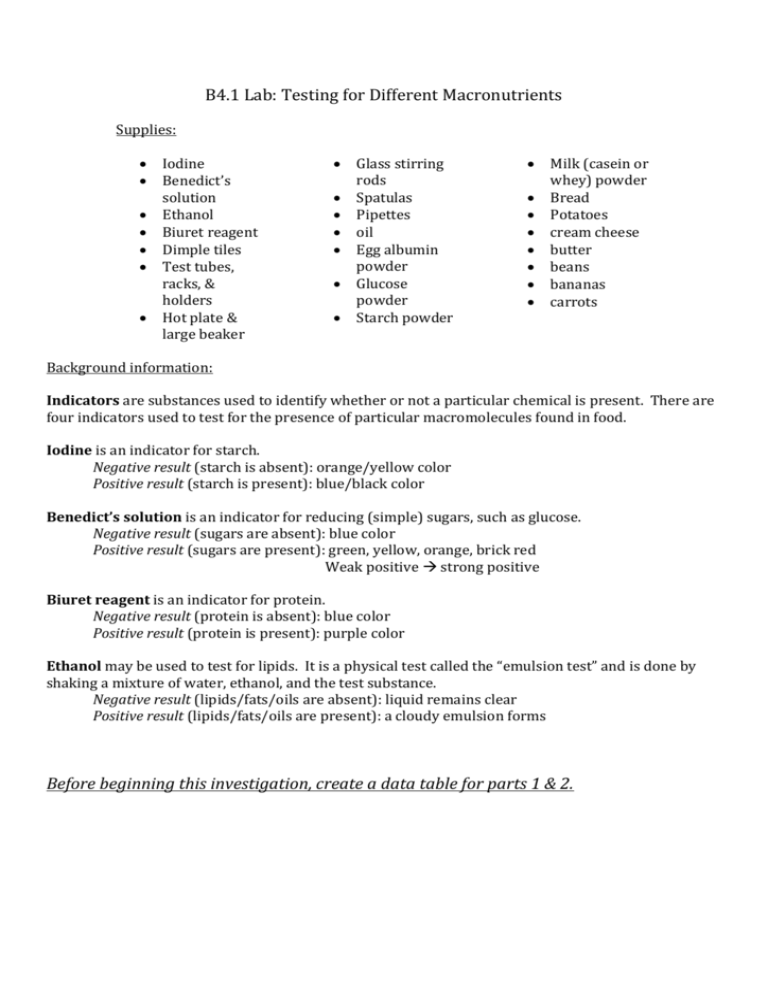
B4.1 Lab: Testing for Different Macronutrients Supplies: Iodine Benedict’s solution Ethanol Biuret reagent Dimple tiles Test tubes, racks, & holders Hot plate & large beaker Glass stirring rods Spatulas Pipettes oil Egg albumin powder Glucose powder Starch powder Milk (casein or whey) powder Bread Potatoes cream cheese butter beans bananas carrots Background information: Indicators are substances used to identify whether or not a particular chemical is present. There are four indicators used to test for the presence of particular macromolecules found in food. Iodine is an indicator for starch. Negative result (starch is absent): orange/yellow color Positive result (starch is present): blue/black color Benedict’s solution is an indicator for reducing (simple) sugars, such as glucose. Negative result (sugars are absent): blue color Positive result (sugars are present): green, yellow, orange, brick red Weak positive strong positive Biuret reagent is an indicator for protein. Negative result (protein is absent): blue color Positive result (protein is present): purple color Ethanol may be used to test for lipids. It is a physical test called the “emulsion test” and is done by shaking a mixture of water, ethanol, and the test substance. Negative result (lipids/fats/oils are absent): liquid remains clear Positive result (lipids/fats/oils are present): a cloudy emulsion forms Before beginning this investigation, create a data table for parts 1 & 2. Investigation: Part 1: Testing known positives and negatives Begin by performing the following tests on known substances to observe a positive and negative result. The observations will be helpful when you do part 2 and test foods of unknown composition. 1. Set up a hot water bath that you will need for the Benedict’s test 2. Iodine test for the presence of starch: a. Place a little starch powder in a depression on a spotting tile. b. Place a few drops of distilled water on a different depression. c. Add a few drops of iodine to each. d. Compare and record your results. 3. Benedict’s test for the presence of glucose: a. Place approximately 5mL of strong glucose solution into a labeled test tube. b. Place approximately 5mL of distilled water into a second test tube labeled “water.” c. Add about 10 – 20 drops of Benedict’s solution to each test tube. d. Lower the test tube into a beaker of boiling water. Wait until the test tube contents boil and leave it for two minutes. e. Compare and record your results. 4. Biuret test for the presence of proteins: a. Dissolve a little egg albumin powder in 5mL of water in a labeled test tube. b. Place approximately 5mL of distilled water to a second test tube labeled “water.” c. Add about 10 – 20 drops of Biuret reagent in each test tube. d. Compare and record your results. 5. Ethanol test for lipids (oils & fats): a. Place about 1mL of ethanol in a test tube. Add a few drops of oil and mix by shaking. Add an equal amount of water and shake vigorously again. b. Place about 1mL of ethanol in a second test tube. Add a few drops of water and mix by shaking. Shake the test tube. c. Compare and record your results. Part 2: Testing foods of unknown composition 1. Choose a food from the options provided, divide it into four samples and perform one test on each sample. 2. Crush solid samples in warm water before performing the Benedict’s (glucose) and Biuret (protein) tests. This can be done in this method: a. Cut the food sample into small pieces. b. Place a few small pieces into a beaker with about 10 mL of warm water. c. Using a metal spatula to stir and push the food against the walls of the beaker, crushing the food pieces against the wall. d. Strain out some of the liquid into two separate test tubes – one for Benedict’s test and one for Biuret test. 3. Crush and strain solid samples in ethanol to extract fats and oils before doing the Ethanol (lipids) test. 4. The Iodine (starch) test can be done directly on solid foods. 5. Determine which of the four macronutrients are present in each food.
